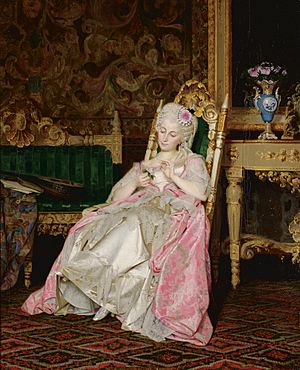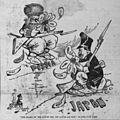He loves me... he loves me not facts for kids
The game He loves me, he loves me not (or She loves me, she loves me not) is a fun way to guess if someone likes you back. It started in France and is called effeuiller la marguerite in French. People play it to find out if their crush feels the same way.
Contents
How to Play the Daisy Game
To play, you need a flower, usually a daisy. You pick off one petal at a time. With each petal, you say either "He loves me" or "He loves me not." You keep going until the very last petal.
What the Last Petal Means
The phrase you say when you pick the last petal is supposed to be the answer. If you say "He loves me," then it means they do! If you say "He loves me not," then maybe they don't. It's just a game, so don't take it too seriously!
The French Version of the Game
In the original French game, the petals told you more than just a simple yes or no. They described how much someone loved you.
Levels of Affection
The French phrases for the petals were:
- un peu – "a little"
- beaucoup – "a lot"
- passionnément – "passionately"
- à la folie – "to madness"
- pas du tout – "not at all"
So, the last petal would tell you the exact level of affection!
The Game in Culture
This game has appeared in many places throughout history.
In Ballet
The daisy game is shown in the famous ballet Giselle. This ballet was first performed in Paris in 1841. It appears in the first act as a pantomime.
In Cartoons
The game has even been used in political cartoons. For example, a cartoon from 1904 by Bob Satterfield showed Russia and Japan playing the game. They were using it to decide if they should go to war with each other.
Images for kids




